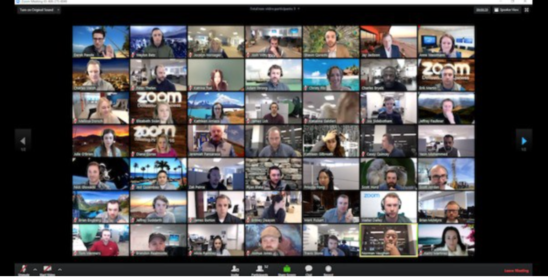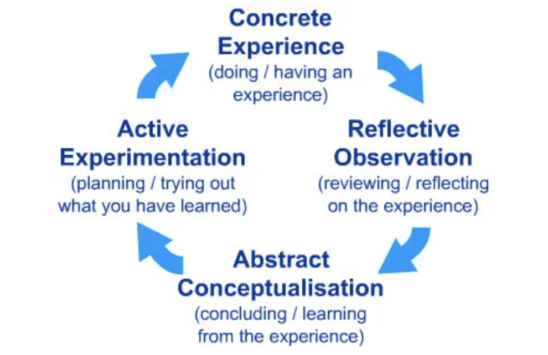
Correia, A.-P. et al (2020) Evaluating videoconferencing systems for the quality of the educational experience, Distance Education, Vol. 41, No. 4, November 2020
Purpose of the study
This is an interesting comparison of the value of different contemporary videoconferencing systems for experiential learning. What caught my interest was the idea of evaluating technology systems for a particular educational purpose, in this case experiential learning.

The authors, all from Ohio State University’s Department of Educational Studies, started with seven different videoconferencing systems then narrowed them down to four: Zoom, Microsoft Teams, Skype, and WhatsApp. Again, if interested I suggest you read the full article, but here is my take on it.
Methodology
Their methodology was interesting if somewhat controversial. Instead of gathering empirical data such as students’ responses or achievement, they used an analytical evaluation based on usability inspection: a set of guidelines based on an expert’s experience (the experts being the authors in this case).
They used the following main criteria for analysis:
- general features of the systems: compatibility with different devices, cost, meeting duration, etc.
- learning-related features: audio, video, recording, playback, remote control, chat, etc.
- Kolb’s experiential learning modes: concrete experience; reflective observation; abstract conceptualisation; active experimentation. Learning-related features were ‘scored’ against each of these modes.
- 11 usability factors including: privacy/security; simplicity; navigability
- the QUIM criteria model for evaluating usability, which included efficiency, effectiveness, safety.
The four videoconferencing systems were then scored against these different criteria.
Results
- Zoom had the highest number of learning-related features, and WhatsApp the lowest.
- Zoom also had the most supportive system for each experiential learning mode
- each system was also ‘scored’ on usability criteria; Skype did best on this, scoring 0.9% more than Zoom
My comments
Although Zoom came out marginally better overall than Skype or Microsoft Teams, the differences were relatively small (no attempt was made at testing for statistical significance). WhatsApp though clearly lacked some of the benefits of the other three systems. So my takeaway is that it doesn’t really matter whether you use Zoom, Skype or Teams, they will all do the job.
Also the comparison was restricted to the free versions of each system. This for instance would limit a Zoom session to 40 minutes. An institution though is more likely to choose a paid license for a variety of reasons, including for technical support, longer sessions and enhanced security.
While it is valuable to test against a specific teaching approach, in this case experiential learning, videoconferencing systems are used for many other teaching purposes, such as lecturing. Choice of such systems are again likely to be made using a broader range of factors. Indeed, given the prevalence of using videoconferencing for lecturing, it might have been of more general interest to focus on that teaching approach.
Lastly the study did not examine whether these systems were actually used for experiential learning. There were some suggestions in the article on how this might be done, but in the end the proof of the pudding is in the eating, so at some point I hope the researchers will go on to what seems to me the obvious next stage and that is to examine the learning outcomes from any of the three main video conferencing systems used for experiential learning.
In particular I think most instructors will be interested in the way videoconferencing is used for experiential learning and what works and what doesn’t. (I don’t think a particular brand is the significant issue here.)
So in the end I was disappointed with the study, but it may be of interest to those extensively using videoconferencing for teaching – or for those wanting to try experiential learning in this format.









 Dr. Tony Bates is the author of eleven books in the field of online learning and distance education. He has provided consulting services specializing in training in the planning and management of online learning and distance education, working with over 40 organizations in 25 countries. Tony is a Research Associate with Contact North | Contact Nord, Ontario’s Distance Education & Training Network.
Dr. Tony Bates is the author of eleven books in the field of online learning and distance education. He has provided consulting services specializing in training in the planning and management of online learning and distance education, working with over 40 organizations in 25 countries. Tony is a Research Associate with Contact North | Contact Nord, Ontario’s Distance Education & Training Network.

